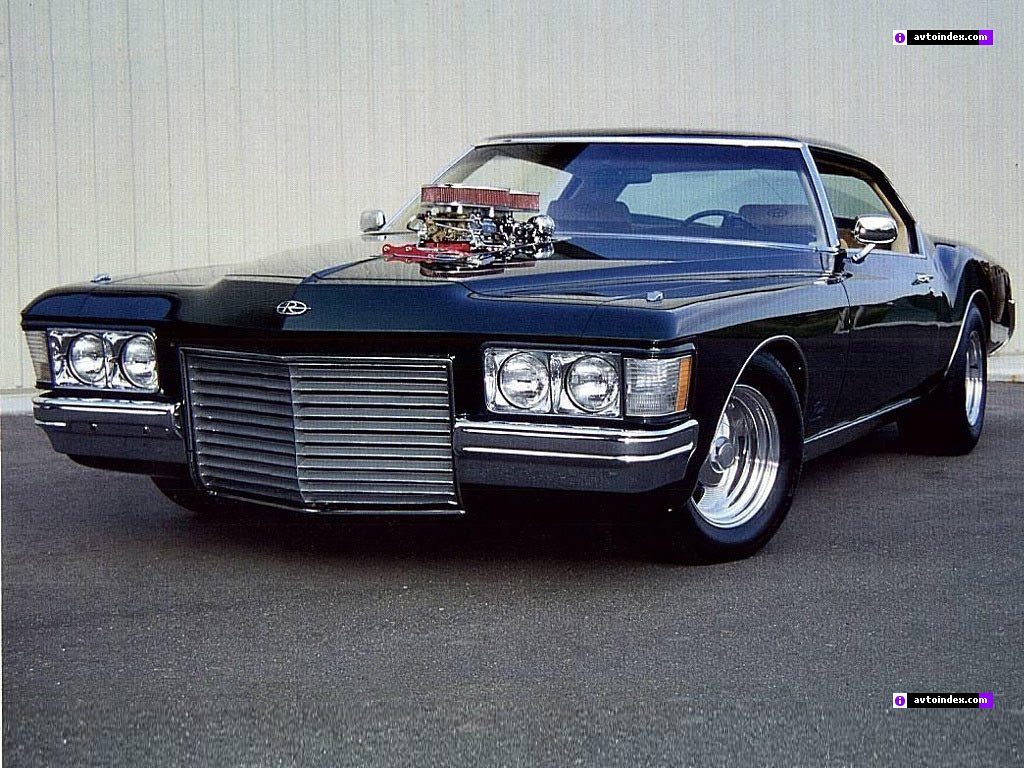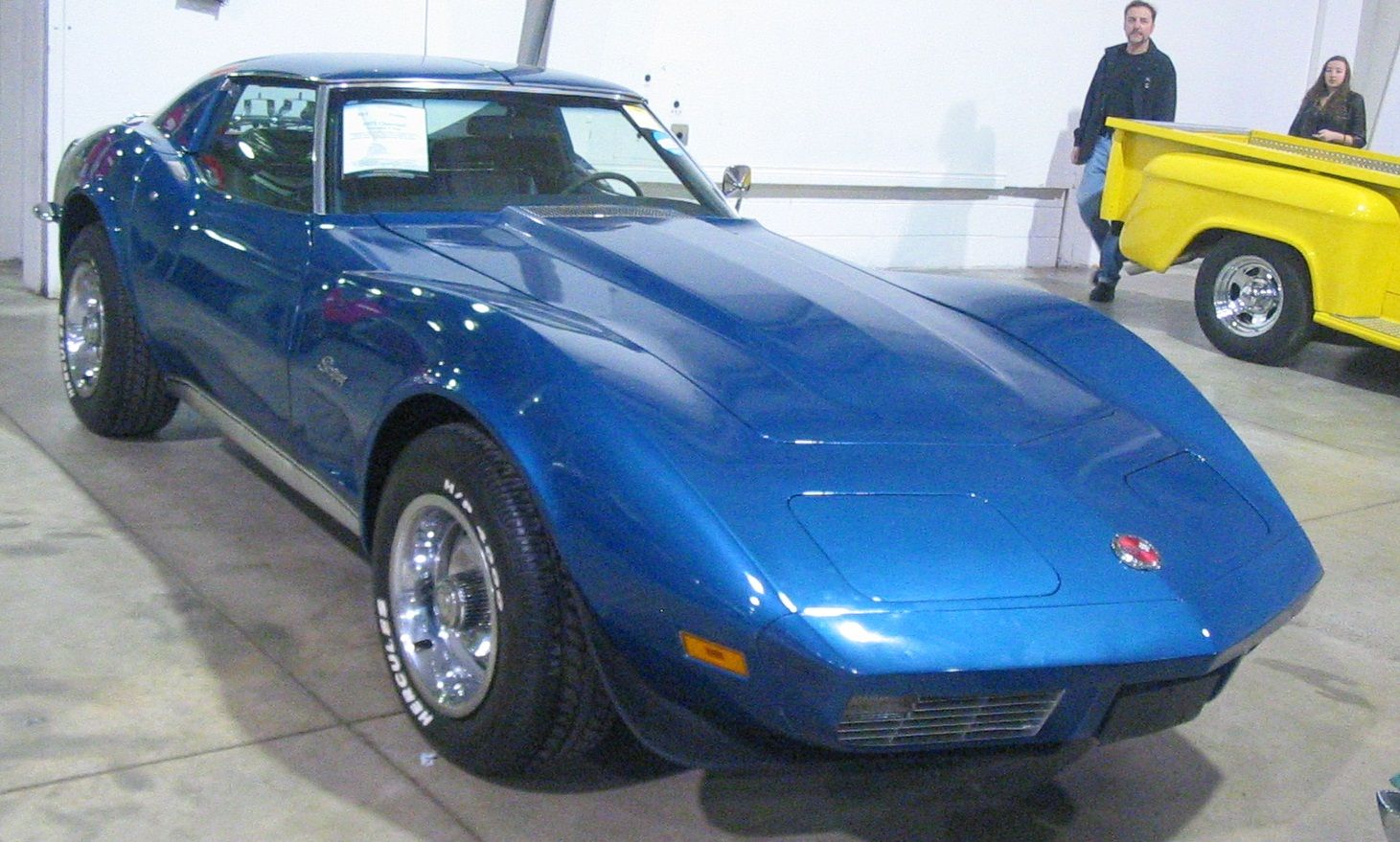
Classic cars represent the zenith of automotive culture, often delivering a driving experience unparalleled by modern vehicles. For many enthusiasts, the dream of owning a piece of history, a machine that embodies a bygone era of design and engineering, is a powerful allure. However, a common misconception dictates that all classic cars are unattainable, reserved only for those with seemingly bottomless pockets. This couldn’t be further from the truth.
While some vintage models indeed command astronomical prices at auction, a fascinating segment of the classic car market remains surprisingly accessible. These are the vehicles that, for various reasons—be it shifting market preferences, initial overproduction, or evolving engineering standards—have experienced significant depreciation over the years. They are the hidden gems, the underappreciated marvels that offer immense character, unique styling, and a thrilling connection to automotive heritage, often for a fraction of what you might expect.
Prepare to have your perceptions challenged as we embark on a journey through the often-overlooked corners of classic car collecting. We’re about to explore a selection of remarkable automobiles that, despite their undeniable iconic status and design prowess, have somehow slipped through the cracks in the high-value market. These are the cars that prove you don’t need a king’s ransom to own a piece of motoring history; you just need to know where to look.
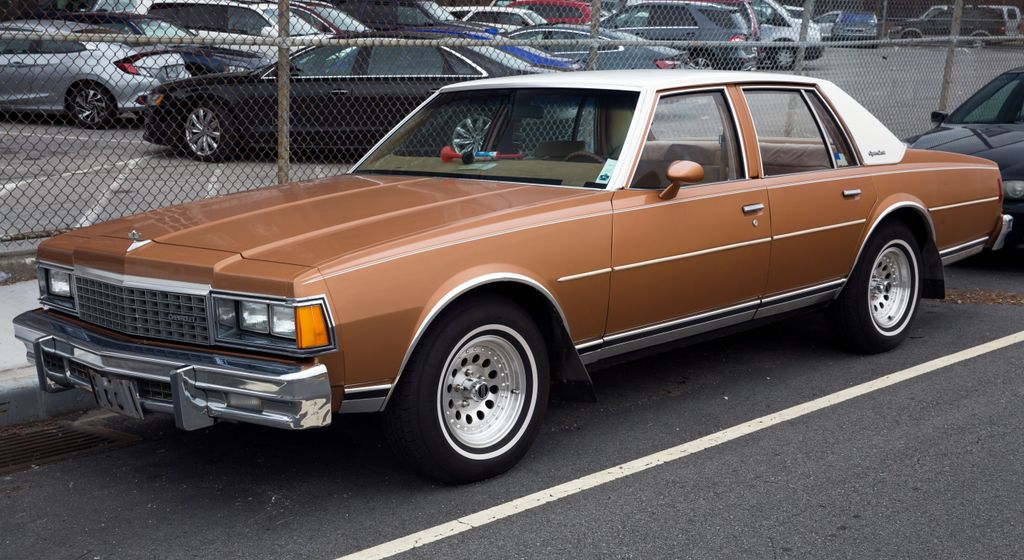
1. **Chevrolet Caprice** The Chevrolet Caprice stands as a testament to the mid-1960s American automotive landscape. First hitting the roads in 1965, this full-size sedan was Chevrolet’s flagship model, designed to capture the hearts of buyers with its undeniable spaciousness, exceptional comfort, and a wide array of robust engine choices. It was a vehicle that exuded confidence and luxury, promising a grand touring experience for families and individuals alike.
However, the Caprice’s reign at the top was relatively short-lived in terms of value retention. Not long after its impressive debut, the market began to shift dramatically. The demand for large, gas-guzzling sedans, once the epitome of American aspiration, started to vanish. As fuel costs rose and consumer preferences evolved, the bulky Caprice quickly became dated in the eyes of buyers, who increasingly flocked to more fuel-efficient and compact alternatives. This significant change in market dynamics led to a considerable drop in the Caprice’s resale value, a decline from which it has unfortunately never fully recovered to its original glory.
Car Model Information: 1996 Chevrolet Caprice Classic
Name: Chevrolet Caprice
Caption: Chevrolet Caprice PPV
Manufacturer: unbulleted list
Production: unbulleted list
ModelYears: unbulleted list
Predecessor: unbulleted list
Class: Full-size car
Platform: unbulleted list
Layout: FR layout
Categories: 1970s cars, 1980s cars, 1990s cars, 2000s cars, 2010s cars
Summary: The Chevrolet Caprice is a full-size car produced by Chevrolet in North America for the 1965 through 1996 model years. Full-size Chevrolet sales peaked in 1965, with over a million units sold. It was the most popular car in the U.S. in the 1960s and early 1970s, which, during its production, included the Biscayne, Bel Air, and Impala.
Introduced in mid-1965 as a luxury trim package for the Impala four-door hardtop, Chevrolet offered a full line of Caprice models for the 1966 and subsequent model years, including a “formal hardtop” coupe and an Estate station wagon. The 1971 through 1976 models are the largest Chevrolets built. The downsized 1977 and restyled 1991 models were awarded Motor Trend Car of the Year. Production ended in 1996.
From 2011 until 2017, the Caprice nameplate returned to North America as a full-size, rear wheel drive police vehicle, a captive import from Australia, built by General Motors’s subsidiary Holden. The police vehicle is a rebadged version of the Holden WM/WN Caprice. The nameplate also had a civilian and police presence in the Middle East from 1999 until 2017, where the imported Holden Statesman/Caprice built by Holden was marketed as the Chevrolet Caprice in markets such as Saudi Arabia and the UAE.
Get more information about: Chevrolet Caprice
Buying a high-performing used car >>>
Brand: Chevrolet Model: Caprice
Price: $34,791 Mileage: 35,241 mi.
Read more about: The Golden Age of Chrome and Power: 15 Iconic American Cars That Defined the 1950s
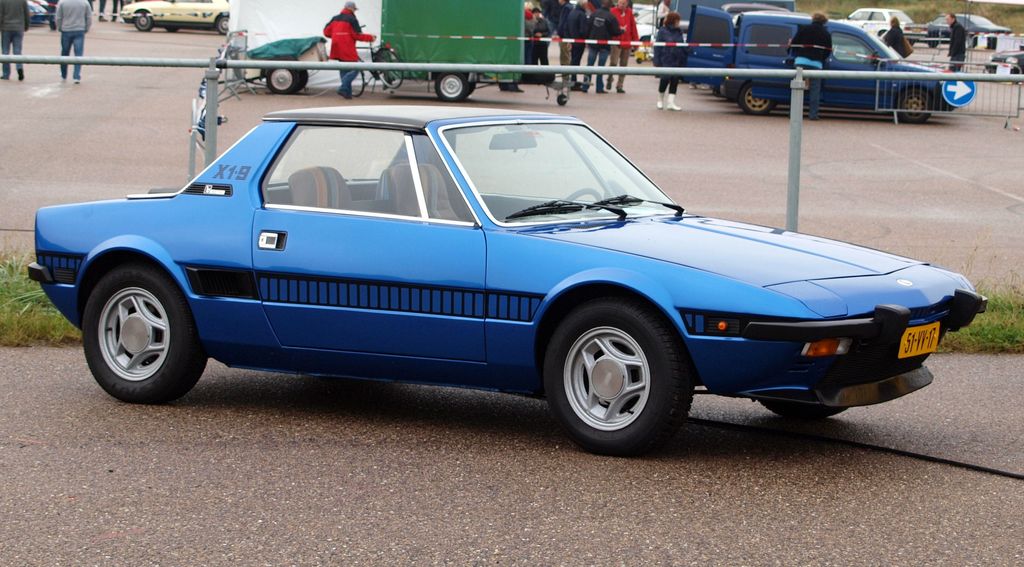
2. **Fiat X1/9** Stepping onto the scene in 1972, the Fiat X1/9 immediately carved out a unique niche in the sports car world. Designed with an undeniable flair by the legendary Bertone, this two-seater featured an innovative mid-engine layout, a configuration typically reserved for much more exotic machinery. Adding to its appeal was a removable targa-style top, blending thrilling open-top motoring with the engaging dynamics of a true sports car. It promised an exhilarating driving experience that was both fun and accessible.
Despite its charming design and impressive engineering for its time, the Fiat X1/9 has experienced significant depreciation through the years. Several factors conspired against its long-term value, including persistent reliability issues that often plagued early Italian cars, and the inherent difficulty in sourcing replacement parts, especially outside of its native market. Furthermore, a general decline in demand for older, more niche European sports cars contributed to its slide in the resale market.
Nevertheless, the X1/9’s depreciation has inadvertently turned it into a surprisingly affordable option for enthusiasts today. For those seeking a unique and quirky classic car, its lower resale value makes it an attractive proposition. The X1/9’s distinctive design and its pure mid-engine layout continue to appeal to drivers who are looking for a truly unique and engaging driving experience that stands apart from the crowd, proving that character can sometimes outweigh conventional market worth.
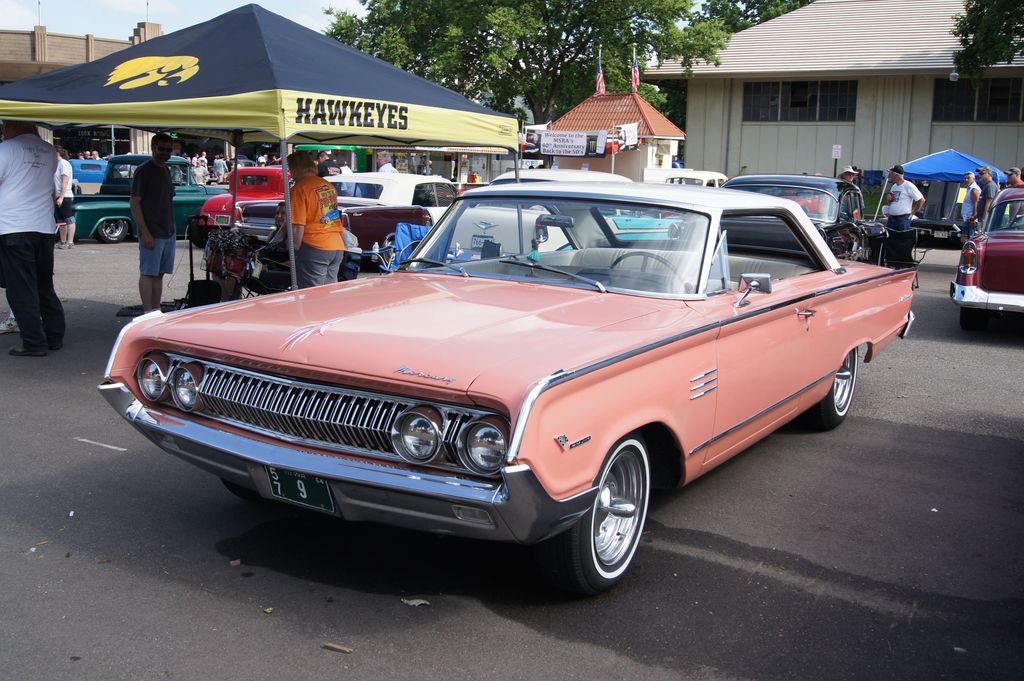
3. **1964 Mercury Marauder** The 1964 Mercury Marauder was a compelling statement from Mercury, Ford’s luxury subdivision, during an era of burgeoning performance. Introduced as a full-size, performance-oriented car, the Marauder lineup was meticulously crafted to deliver a compelling blend of sophisticated style, luxurious comfort, and substantial power. It represented Mercury’s ambition to offer a vehicle that didn’t just move people but moved them with a sense of occasion and speed.
Despite what might seem like advantageous factors, such as a relatively low production run that often implies future rarity and value, Marauders quickly plummeted in value just years after their initial release. This rapid depreciation can be attributed to a significant shift in buyer preferences; consumers began gravitating towards smaller and more fuel-efficient vehicles as the automotive landscape evolved. Concurrently, the market became saturated with an increased availability of more powerful and aggressive muscle cars from rivaling automakers, overshadowing the Marauder’s performance claims. Consequently, these stylish 1960s Marauder models can now often be found at remarkably affordable prices, especially when compared to their original market value.
Car Model Information: 2003 Mercury Marauder 4dr Sdn
Name: Mercury Marauder
Caption: 2003–2004 Mercury Marauder
Manufacturer: Mercury (automobile)
Production: 1963–1965,1969–1970,2002–2004
ModelYears: 1963–1965,1969–1970,2003–2004
Class: Full-size
Layout: FR layout
Categories: 1960s cars, 1970s cars, All articles with dead external links, Articles with dead external links from January 2018, Articles with permanently dead external links
Summary: The Mercury Marauder is an automobile nameplate that was used for three distinct full-size cars produced by the Mercury division of Ford Motor Company. Deriving its name from the most powerful engines available to the Mercury line, the Marauder was marketed as the highest-performance version of the full-size product range.
Introduced as a 19631⁄2 model line for its first production run, the Mercury Marauder was distinguished by its sloped roofline (shared with the Ford Galaxie). The nameplate was a sub-model of the three Mercury model lines (Monterey, Monterey Custom, and S-55).
For the 1966 model year, the Marauder was replaced by the S-55 as a stand-alone model line, making it the Mercury counterpart of the Ford Galaxie 500 XL version.
The Marauder model name returned as a fastback-like version of the Mercury Marquis for the 1969 model year. It was positioned as a personal luxury car between the Mercury Cougar and Continental Mark III. Following the 1970 model year, the Marauder model was discontinued.
The Mercury Marauder nameplate was revived for the 2003 model year as a high-performance variant of the full-size Grand Marquis using the Ford Panther platform. After lower-than-expected sales, the Marauder was discontinued at the end of the 2004 model year. The Mercury Marauder became the last rear-wheel drive sedan introduced by Ford Motor Company in North America.
Get more information about: Mercury Marauder
Buying a high-performing used car >>>
Brand: Mercury Model: Marauder
Price: $14,999 Mileage: 113,973 mi.
Read more about: American Muscle Car Legends: 16 Icons of Power and Speed on the Drag Strip

4. **Dodge Charger** The original Dodge Charger holds an undeniable and iconic place in automotive history, widely recognized as one of the most significant muscle cars ever produced. Its aggressive styling, powerful engines, and indelible presence on both screen and street cemented its legendary status. The very name ‘Charger’ conjures images of raw American power and unbridled performance, making it a dream car for countless enthusiasts across generations.
However, it’s a surprising truth that not all variants of this automotive icon have retained the same stratospheric value as the rarest and most sought-after trim levels. Specifically, some later generations of the Charger, particularly those produced with higher numbers or equipped with less potent engines, have experienced rapid depreciation. Models from the early 1970s, for instance, demonstrably fail to hold their value anywhere near as well as their highly coveted older counterparts from the late 1960s, offering a more accessible entry point for those who admire the Charger’s legacy without the premium price tag.
Car Model Information: 2023 Dodge Charger GT
Name: Dodge Charger
Caption: 1969 Dodge Charger
Manufacturer: Dodge
Production: 1966–1978,1981–1987,2005–present
ModelYears: 1966–1978,1982–1987,2006–present
Categories: 1960s cars, 1970s cars, 1980s cars, 2000s cars, 2010s cars
Summary: The Dodge Charger is a model of automobile marketed by Dodge in various forms over eight generations since 1966.
The first Charger was a show car in 1964. A 1965 Charger II concept car resembled the 1966 production version.
In the United States, the Charger nameplate has been used on mid-size cars, personal luxury coupes, subcompact hatchbacks, and full-size sedans.
Get more information about: Dodge Charger
Buying a high-performing used car >>>
Brand: DODGE Model: Charger
Price: $27,288 Mileage: 30,387 mi.
Read more about: Unlocking Excellence: The 10 Best Phones of the Year, Ranked and Reviewed by Tech Experts
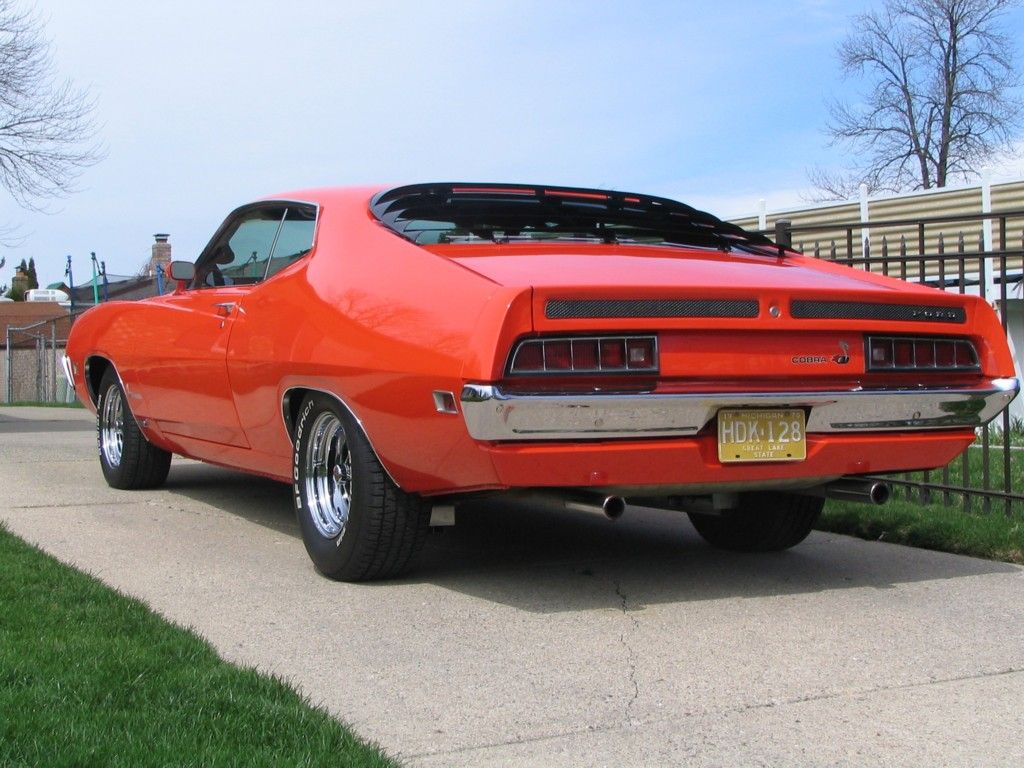
5. **Ford Torino** The Ford Torino cemented its reputation in the late 1960s, largely thanks to its impressive success in NASCAR racing. The iconic Torino Talladega, a formidable race car based on Ford’s flagship midsize vehicle, exemplified the brand’s commitment to performance and engineering prowess. This racing heritage initially endowed the Torino with a strong image of speed and capability, leading many to believe it would retain its value as a desirable classic.
Yet, despite this storied racing background, the Torino’s ability to hold its value proved to be less robust than its performance on the track. A confluence of factors led to its depreciation, including a significant change in overall market preferences, which began to favor different types of vehicles. Rising fuel costs also played a crucial role, making large, performance-oriented cars less appealing to the average consumer. Furthermore, the introduction of newer vehicles that could outperform the once-unbeatable Ford Torino contributed to its declining market worth. Today, this vehicle presents itself as a fantastic entry-level classic car, perfect for petrol heads who are operating on a tighter budget but still desire a piece of American muscle car history.
Car Model Information: 1970 Ford Torino
Aka: Ford Fairlane (Venezuela)
Name: Ford Torino
Caption: 1970 Ford Torino Cobra SportsRoof
Manufacturer: Ford Motor Company
Production: 1968–1976
Class: Mid-size car,muscle car
Layout: FR layout
Related: Mercury Montego
Assembly: ubl
Predecessor: Ford Fairlane (Americas)
Successor: Ford LTD II
Categories: 1960s cars, 1970s cars, All Wikipedia articles written in American English, All articles with vague or ambiguous time, Articles with short description
Summary: The Ford Torino is an automobile that was produced by Ford for the North American market between 1968 and 1976. It was a competitor in the intermediate market segment and essentially a twin to the Mercury Montego line.
Just as the Ford LTD had been the upscale version of the Ford Galaxie, the Torino was initially an upscale variation of the intermediate-sized Ford Fairlane. In the 1968 and 1969 model years, the intermediate Ford line consisted of lower-trim Fairlanes and its subseries, the upper-trim Torino models. In 1970, Torino became the primary name for Ford’s intermediate, and the Fairlane was now a subseries of the Torino. In 1971, the Fairlane name was dropped altogether, and all Ford intermediates were called Torino.
Most Torinos were conventional cars, and generally the most popular models were the four-door sedans and two-door hardtops. However, Ford produced some high-performance “muscle car” versions of the Torino by fitting them with large powerful engines, such as the 428 cu in (7.0 L) and 429 cu in (7.0 L) “Cobra-Jet” engines. Ford also chose the Torino as the base for its NASCAR entrants, and it has a successful racing heritage.
Get more information about: Ford Torino
Buying a high-performing used car >>>
Brand: Ford Model: Torino
Price: $49,000 Mileage: 33,326 mi.
Read more about: 12 Iconic Rides from Movies & TV That Drove Straight Into Our Hearts
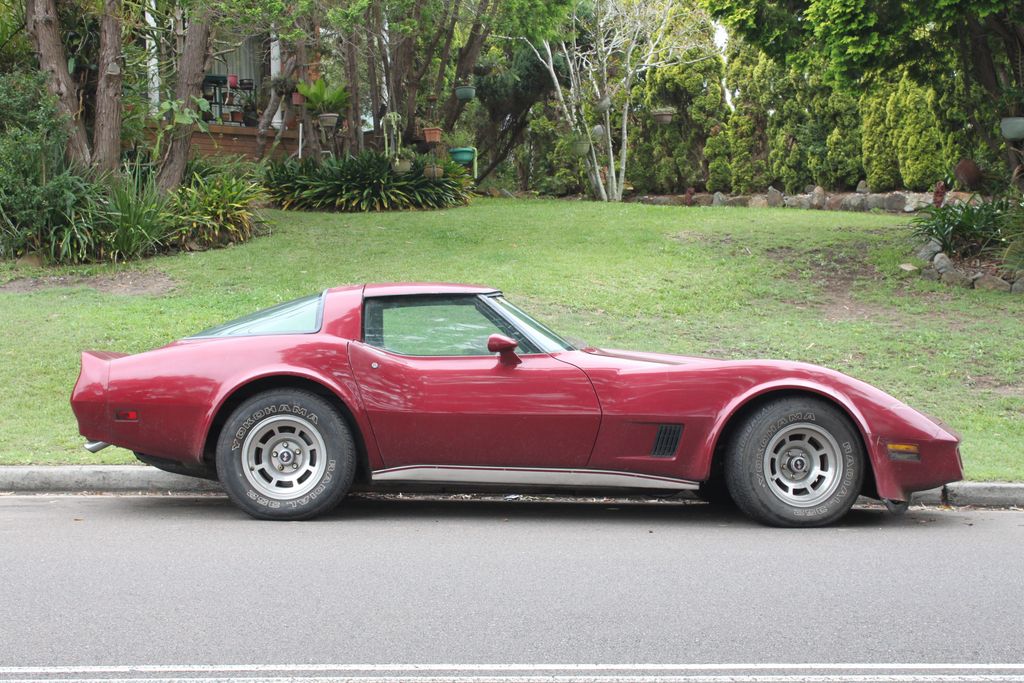
6. **Chevrolet Corvette C3 (1980s)** The third generation of America’s original sports car, the Chevrolet Corvette C3, enjoyed an exceptionally long production run, spanning from the latter half of the 1960s into the early 1980s. When it first launched, the C3 was undoubtedly a modern and forward-thinking automobile, boasting contemporary styling and performance that captivated a generation of drivers. Its distinctive “coke bottle” shape and removable T-tops became synonymous with the era’s automotive cool.
However, as its production extended over more than a decade, the C3 model struggled significantly to keep pace with the rapidly changing market. By the early 1980s, the C3 was perceived as somewhat dated, especially when compared to newer, more technologically advanced sports cars entering the market. A key factor in its value decline was the performance of its engines during this period; for example, GM offered the L-48 V8 engine, which, in 1980, produced a mere 180 horsepower. This figure was a stark contrast to the mighty big-block variants that had powered the C3 in its earlier, more celebrated years, making the later-production C3 Corvette among the cheapest legendary classic cars available to buy today.
Car Model Information: 2020 BMW X3 xDrive30i
Name: Chevrolet Corvette (C3)
Caption: 1973 Chevrolet Corvette Stingray
Manufacturer: Chevrolet
Aka: Chevrolet Corvette Stingray,(1968–76)
Production: August 1967 – October 1982
ModelYears: 1968–82
Platform: General Motors Z platform
Assembly: St. Louis Truck Assembly,Bowling Green Assembly Plant
Predecessor: Chevrolet Corvette (C2)
Successor: Chevrolet Corvette (C4)
Class: Sports car
BodyStyle: Convertible (car),coupé
Layout: Mid-engine design
Engine: {{cvt,305,cuin,L,1,Chevrolet small-block engine (first- and second-generation)#LG4,V8 engine
Transmission: manual transmission,manual transmission,Turbo-Hydramatic,Automatic transmission
Wheelbase: cvt
Length: {{cvt,182.1,in,mm,0
Width: {{cvt,69.2,in,mm,0
Height: {{cvt,47.8,in,mm,0
Weight: cvt
Designer: GM & Chevrolet design staff,Zora Arkus-Duntov,Bill Mitchell (designer)
Categories: 1970s cars, 1980s cars, All articles with unsourced statements, Articles with short description, Articles with unsourced statements from April 2024
Summary: The Chevrolet Corvette (C3) is the third generation of the Corvette sports car that was produced from 1967 until 1982 by Chevrolet for the 1968 to 1982 model years. Engines and chassis components were mostly carried over from the previous generation, but the body and interior were new. It set new sales records with 53,807 produced for the 1979 model year. The C3 was the second Corvette to carry the Stingray name, though only for the 1969–76 model years. This time it was a single word as opposed to Sting Ray as used for the 1963–67 C2 generation. The name was then retired until 2014 when it returned with the release of the C7.
The most expensive Corvette C3 to sell in history was a 1969 L88 Lightweight, one of only four lightweight L88s to be produced. It was sold by Barrett-Jackson in January 2014 for $2,860,000 (£1,728,941).
Get more information about: Chevrolet Corvette (C3)
Buying a high-performing used car >>>
Brand: Chevrolet Model: Corvette C3
Price: $19,649 Mileage: 66,810 mi.
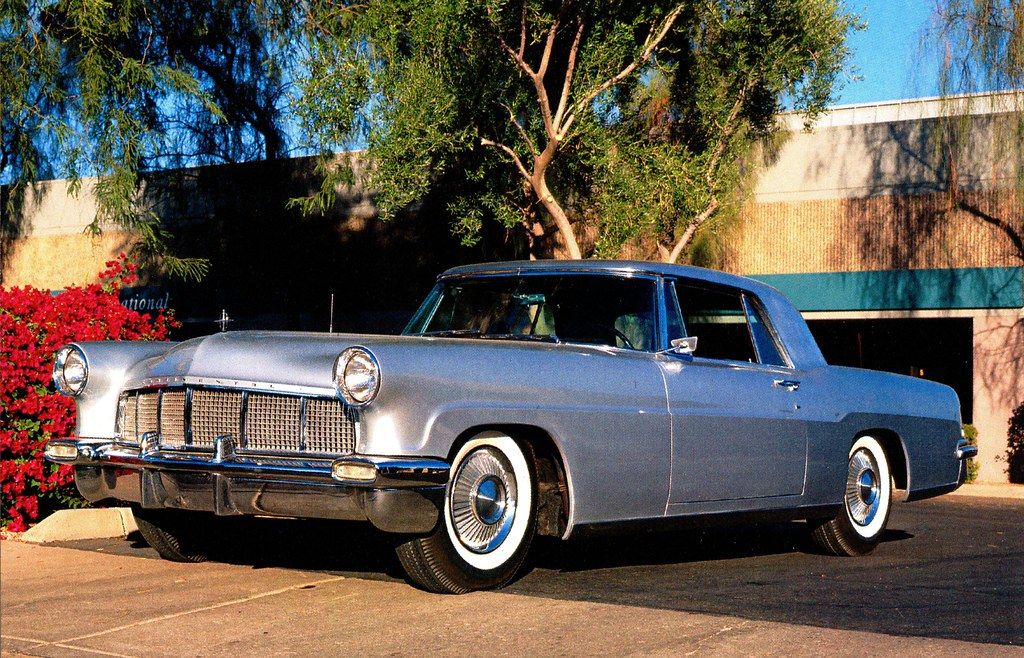
7. **Lincoln Continental** The Lincoln Continental boasts a rich and storied history that stretches back to the late 1930s, establishing it as a pillar of American luxury automotive design. Throughout its long tenure, as one of Lincoln’s flagship models, it quickly earned a reputation for its elegantly sophisticated design, generously spacious interior, and a refined driving experience that epitomized comfort and prestige. Its production journey was extensive, finally concluding only recently in 2020.
Despite its distinguished lineage and enduring appeal, the Lincoln Continental has, perhaps surprisingly, experienced notable depreciation over time. While the truly iconic earlier generations, such as the instantly recognizable models from the 1960s, have largely managed to hold their worth remarkably well, many later generations of the Continental have seen a significant decline in value within the classic car market. This depreciation, however, presents a unique opportunity for discerning buyers who are seeking a luxurious and supremely comfortable ride at a significantly more affordable price point in the classic car arena, offering premium features without the premium cost.
Our exploration of surprisingly undervalued classic cars continues, proving that sometimes, the most interesting finds are those that have gracefully bowed out of the high-stakes collector market. These vehicles, despite their storied pasts and often groundbreaking designs, tell tales of market shifts, evolving tastes, and the unpredictable nature of automotive value. Yet, for the discerning enthusiast, their depreciation has become their greatest asset, opening doors to unique ownership experiences without the premium price tag.
Car Model Information: 2018 Lincoln Continental Reserve
Name: Lincoln Continental
Caption: 2019 Lincoln Continental
Manufacturer: Lincoln Motor Company
Production: 1939–1942,1946–1948,1956–2002,2016–2020
ModelYears: 1940–1942,1946–1948,1958–1980,1982–2002,2017–2020
Class: Full-size car,luxury car
Layout: Longitudinal engine,Front-engine, rear-wheel-drive layout
Categories: 1930s cars, 1940s cars, 1950s cars, 1960s cars, 1970s cars
Summary: The Lincoln Continental is a series of mid-sized and full-sized luxury cars produced between 1939 and 2020 by Lincoln, a division of the American automaker Ford. The model line was introduced following the construction of a personal vehicle for Edsel Ford, who commissioned a coachbuilt 1939 Lincoln-Zephyr convertible, developed as a vacation vehicle to attract potential Lincoln buyers. In what would give the model line its name, the exterior was designed with European “continental” styling elements, including a rear-mounted spare tire. In production for over 55 years across nine different decades, Lincoln has produced ten generations of the Continental. Within the Lincoln model line, the Continental has served several roles ranging from its flagship to its base-trim sedan. From 1961 to 1976, Lincoln sold the Continental as its exclusive model line. The model line has also gone on hiatus three times. From 1949 to 1955, the nameplate was briefly retired. In 1981, the Continental was renamed the Lincoln Town Car to accommodate the 1982 seventh-generation Continental. After 2002, the Continental was retired, largely replaced by the Lincoln MKS in 2009; in 2017, the tenth-generation Continental replaced the MKS. As part of its entry into full-scale production, the first-generation Continental was the progenitor of an entirely new automotive segment, the personal luxury car. Following World War II, the segment evolved into coupes and convertibles larger than sports cars and grand touring cars with an emphasis on features, styling, and comfort over performance and handling. From 1956 to 1957, the Continental nameplate was the namesake of the short-lived Continental Division, marketing the 1956–1957 Continental Mark II as the worldwide flagship of Ford Motor Company; as a second successor, Ford introduced the Continental Mark series in 1969, produced over six generations to 1998. Along with the creation of the personal luxury car segment, the Lincoln Continental marked the zenith of several designs in American automotive history. The Continental is the final American vehicle line with a factory-produced V12 engine (1948), the final four-door convertible (1967), and the final model line to undergo downsizing (for the 1980 model year). American production of the Continental and MKZ, its only two sedans, ended in 2020 thereby making Lincoln a crossover/SUV-only brand in the US.
Get more information about: Lincoln Continental
Buying a high-performing used car >>>
Brand: Lincoln Model: Continental
Price: $22,523 Mileage: 86,549 mi.
Read more about: Unveiling America: A Journey Through the United States’ Rich Tapestry of History, Geography, and Enduring Global Influence
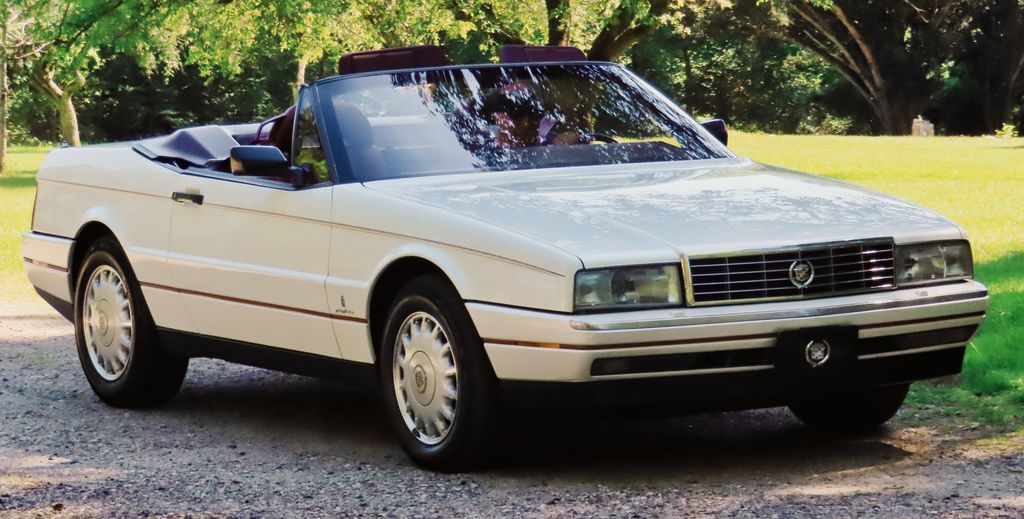
8. **Cadillac Allante** When Cadillac unveiled the Allante in the late 1980s, it was an ambitious statement, a bold attempt to go head-to-head with the sophisticated European luxury sports cars that were dominating the market. This stylish drop-top boasted a truly international pedigree, with its elegant body even designed by the renowned Italian coachmaker Pininfarina. It was envisioned as a fusion of American luxury and Italian flair, aiming to deliver prestige and performance in one sleek package.
However, the Allante’s journey was unfortunately marred by several significant roadblocks that ultimately led to its rapid decline in value. It suffered from persistent quality control issues that chipped away at its luxurious image, while its high production costs made it less competitive against established luxury brands. Adding insult to injury, skyrocketing maintenance costs successfully deterred both potential buyers and existing owners, collectively contributing to the Allante plummeting in value.
Today, this once-aspiring competitor to European grand tourers can often be found at remarkably affordable prices. For those who appreciate its unique design heritage and don’t mind a bit of a project, the Allante offers a distinct and often overlooked entry point into a quirky segment of luxury automotive history, proving that even a car with a star-studded design lineage can become an unexpected bargain.
Car Model Information: 1993 Cadillac Allante Coupe
Name: Cadillac Allanté
Manufacturer: Cadillac,General Motors,Pininfarina
Production: 1986–July 16, 1993,21,430 produced
ModelYears: 1987–1993
Successor: Cadillac XLR
Class: Luxury car,Roadster (automobile)
Assembly: Pininfarina#San Giorgio plant,Detroit
Platform: V-body
Layout: Front-engine,_front-wheel-drive_layout#Front-engine_transversely_mounted_.2F_Front-wheel_drive
BodyStyle: convertible
Engine: Cadillac High Technology engine#HT-4100,Cadillac High Technology engine#4.5,Northstar engine series#L37
Transmission: Turbo-Hydramatic 125#Turbo-Hydramatic 440-T4,GM 4T80 transmission#4T80-E
Length: 178.6 in
Abbr: on
Width: 73.5 in
Height: 52.2 in
Weight: 3720 lb
Wheelbase: 99.4 in
Designer: Pininfarina
Categories: 1990s cars, All articles needing additional references, All articles with unsourced statements, Articles needing additional references from February 2018, Articles needing additional references from September 2018
Summary: The Cadillac Allanté is a two-door, two-seater luxury roadster marketed by Cadillac from 1987 until 1993. The Allanté was based on a Cadillac chassis and running gear with a convertible body style with a folding soft top and an available removable hardtop. The bodies were built in Italy by coachbuilder Pininfarina which were flown to Detroit for final assembly. Over 21,000 were built during its seven-year production run.
Get more information about: Cadillac Allanté
Buying a high-performing used car >>>
Brand: Cadillac Model: Allante
Price: $29,875 Mileage: 8,739 mi.
Read more about: 1980s Automotive Hall of Shame: The Decade’s Most Notorious Car Flops
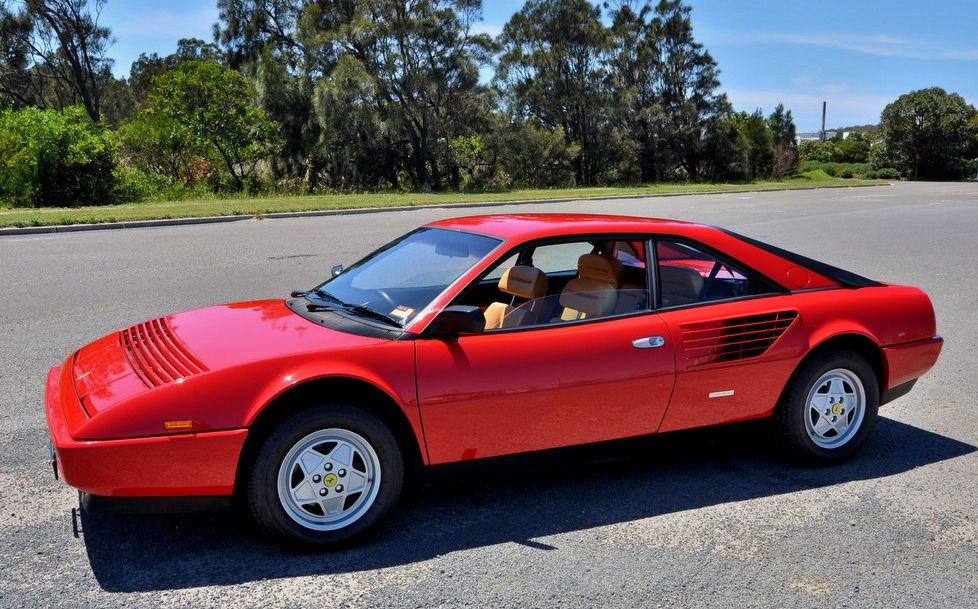
9. **Ferrari Mondial** In 1980, Ferrari introduced the Mondial, a four-seater sports car that represented a significant departure from the brand’s traditional mid-engine, two-seater philosophy. The intention was to create a more practical and usable Ferrari, one that could accommodate more than just two occupants while still delivering the exhilarating performance associated with the Prancing Horse badge. It was an intriguing concept, designed to broaden Ferrari’s appeal.
Yet, as expected, many die-hard Ferrari purists were not entirely fond of the Mondial’s practicality-first approach. This perceived departure from Ferrari’s core identity, combined with its relatively less dramatic styling compared to its stablemates, made the Mondial less desirable to the collectors who typically drive up Ferrari values. It was seen by some as the “entry-level” Ferrari, which, ironically, is precisely what has made it so accessible today.
As a result of this initial lukewarm reception, the Mondial has become one of the most affordable entry points into the exclusive world of Ferrari ownership. For enthusiasts who dream of a classic Ferrari but find other models financially out of reach, the Mondial offers a unique and distinct opportunity. It stands as proof that you can indeed own a piece of Maranello’s legacy without needing to secure a second mortgage, making it an attractive option for those seeking an accessible classic Ferrari experience.
Car Model Information: 1988 Ferrari Mondial
Name: Ferrari Mondial
Manufacturer: Ferrari
Production: Mondial 8: 1980–1982,703 produced,Mondial qv: 1983–1985,1,145 (coupé) produced,629 (cabriolet) produced,Mondial 3.2: 1986–1988,987 (coupé) produced,810 (cabriolet) produced,Mondial t: 1988–1993,858 (coupé) produced,1,017 (cabriolet) produced
Assembly: Modena
Designer: Pininfarina,Pierangelo Andreani (1976),Leonardo Fioravanti (engineer)
Class: Grand tourer
BodyStyle: coupé
Related: Ferrari 308 GTB,Ferrari 328,Ferrari 348
Predecessor: Ferrari GT4
Categories: 1990s cars, Articles with short description, CS1 French-language sources (fr), CS1 German-language sources (de), Cars discontinued in 1993
Summary: The Ferrari Mondial (Type F108) is a mid-engined, V8, grand tourer manufactured and marketed by Ferrari between 1980 and 1993 – with styling by Pininfarina and bodywork by Carrozzeria Scaglietti.
Offered as either a 2+2 coupé or cabriolet, the Mondial has the slightly higher roofline, greater dimensions and increased weight to accommodate occasional rear seating for children or small adults.
The Mondial replaced the Ferrari 308/208 GT4 coupé and remains the last V8, rear mid-engined, 2+2 Ferrari.
The name Mondial, French for global, reflected its worldwide conformance with 1980 safety and emission standards — as well as the company’s prominent motor racing victories. Ferrari had used the nameplate in the 1950s to celebrate Formula 1 World Championships and again in the 1970s to mark its Formula 1 World Constructors Championships.
Get more information about: Ferrari Mondial
Buying a high-performing used car >>>
Brand: Ferrari Model: Mondial
Price: $64,959 Mileage: 26,096 mi.
Read more about: Relive the Golden Age: 22 Cool and Iconic Cars from the 1950s
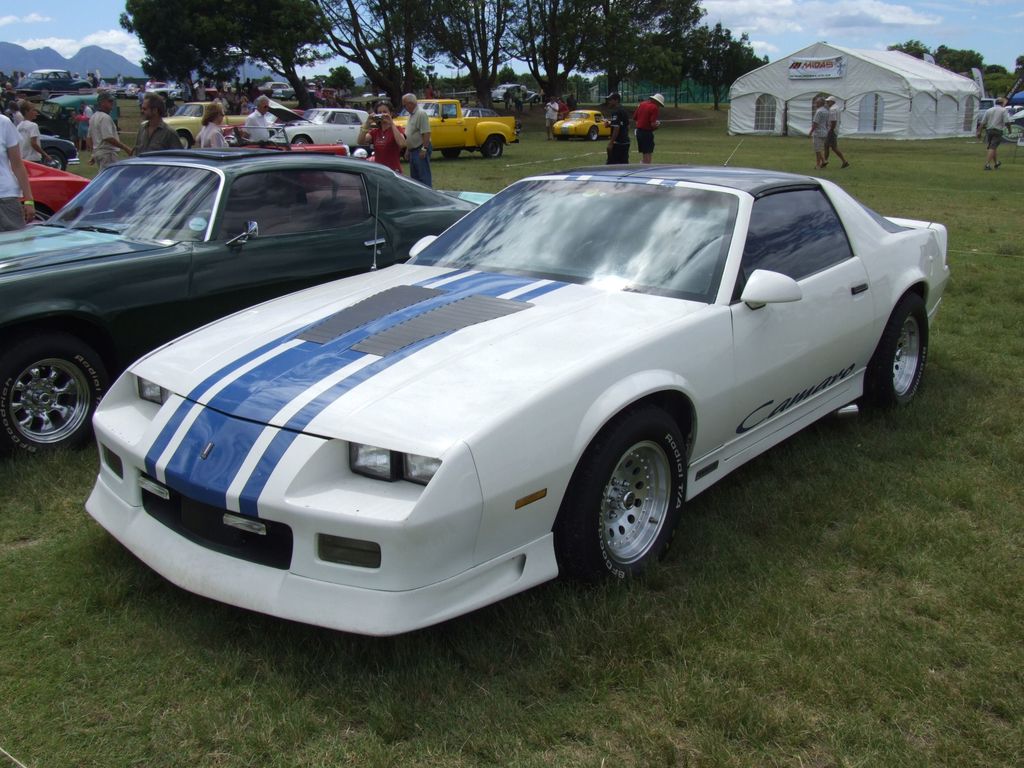
10. **Chevrolet Camaro Z28 (Third Generation)** The early 1980s brought a much-needed refresh for the Chevrolet Camaro with the introduction of its third generation. This iteration of the iconic muscle car featured a sleek, new aerodynamic design, significant improvements in handling, and a range of potent V8 engine options, signalling a modern evolution for a beloved American classic. It was a stylish and capable machine, eager to reclaim its place on the street.
However, despite these promising updates, the third-generation Camaro Z28 soon faced reliability concerns that caused its value to plummet shortly after its release. A particularly notable factor contributing to this decline was the availability of an underpowered variant, equipped with GM’s 305-cubic inch V8 engine, which produced a mere 190 horsepower. This power output was a far cry from the muscle car standards many expected, dimming its appeal.
At one point, these once-coveted third-gen Z28s could be picked up for just a few thousand dollars, a testament to their surprising depreciation. For those seeking a budget-friendly slice of 1980s American muscle, these models offer a unique blend of iconic styling, a classic V8 rumble, and an engaging driving experience, making them an incredible bargain for enthusiasts willing to overlook their past reputation.
Car Model Information: 2018 Chevrolet Camaro 1LS
Name: Chevrolet Camaro
Manufacturer: Chevrolet
Production: 1966–2002,2009–2023
ModelYears: 1967–2002,2010–2024
Class: Pony car
BodyStyle: coupe,convertible
Platform: GM F platform,GM Zeta platform,GM Alpha platform
Layout: Front-engine, rear-wheel-drive layout
Categories: 1970s cars, 1980s cars, 1990s cars, 2+2 coupés, 2000s cars
Summary: The Chevrolet Camaro is a mid-size American automobile manufactured by Chevrolet, classified as a pony car. It first went on sale on September 29, 1966, for the 1967 model year and was designed to compete with the Ford Mustang. The Camaro shared its platform and major components with the Firebird, produced by General Motors‘ Pontiac division that was also introduced for the 1967 model year.
Four distinct generations of the Camaro were developed before production ended in 2002. The nameplate was revived on a concept car that evolved into the fifth-generation Camaro; production started on March 16, 2009.
Production of the sixth generation of the Camaro ended in December 2023, for the 2024 model year.
Get more information about: Chevrolet Camaro
Buying a high-performing used car >>>
Brand: Chevrolet Model: Camaro
Price: $19,125 Mileage: 69,196 mi.
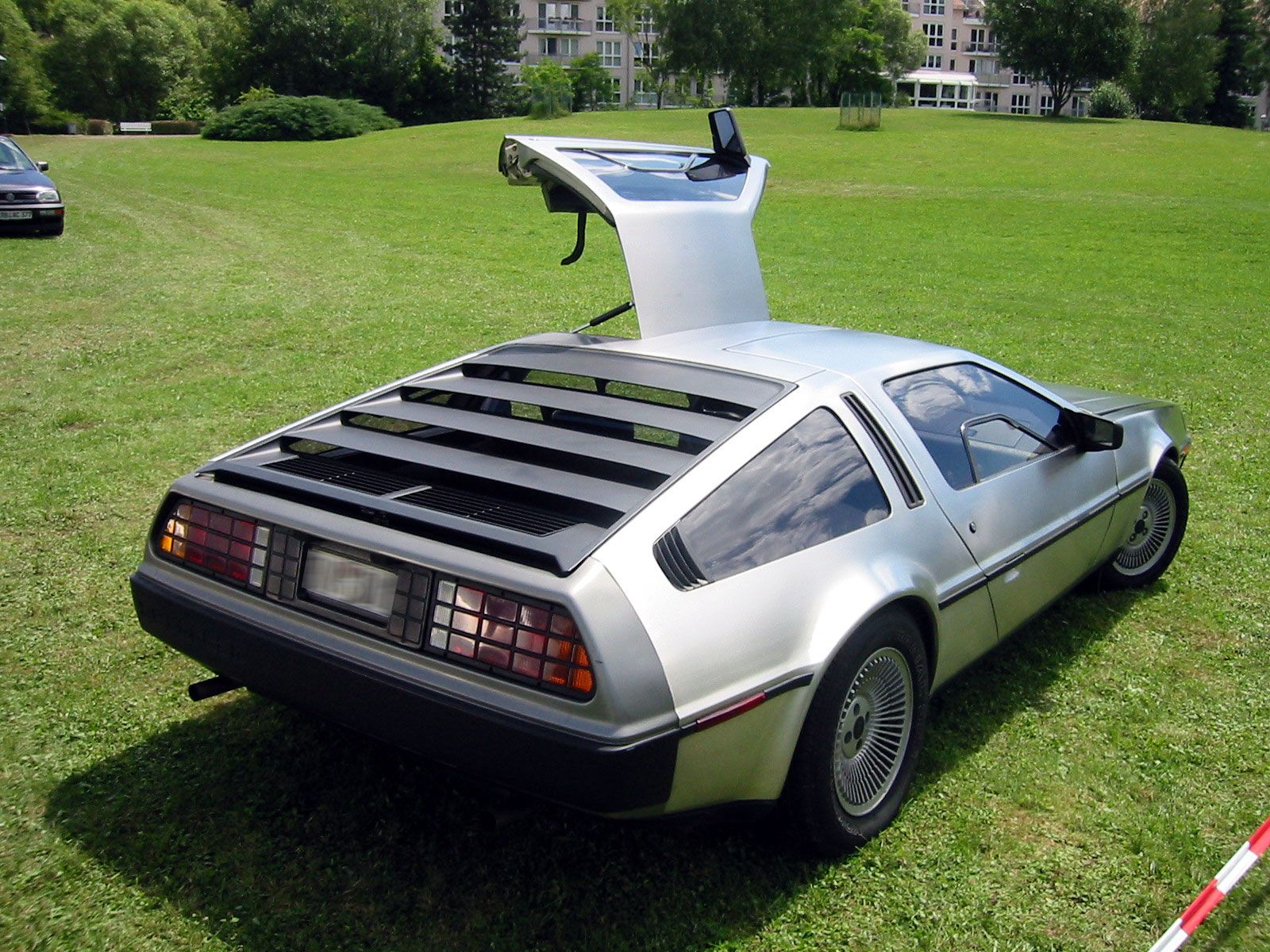
11. **DeLorean DMC-12** The DeLorean DMC-12 is undeniably one of the most iconic sports cars ever produced, largely due to its unforgettable starring role in the “Back to the Future” movies. Introduced in 1981, the DeLorean was a vision of the future, envisioned as a truly innovative vehicle with its signature stainless steel body panels and instantly recognizable gull-wing doors. It captivated the public imagination with its futuristic aesthetic.
Sadly, the real-world performance of the DeLorean did not live up to its extravagant looks. The vehicle was notoriously underpowered for its segment, and its handling characteristics were often described as awful, failing to deliver the thrilling driving experience its appearance promised. This mismatch between expectation and reality significantly hampered its initial market success and long-term desirability.
Furthermore, a high-profile legal case involving the company’s founder, John DeLorean, severely impacted its reputation and market viability. As a consequence, the DeLorean DMC-12 became a symbol of failed automotive ventures, experiencing a substantial and rapid decline in value. Today, it remains an incredibly unique and affordable classic, appealing to enthusiasts who prioritize its undeniable cultural significance and distinctive design over raw performance, making it a truly one-of-a-kind collector’s item.
Car Model Information: 1982 Delorean DMC-12
Name: DMC DeLorean
Alt: 1983 DeLorean
Caption: 1983 DeLorean
Manufacturer: DeLorean Motor Company
Production: January 21, 1981 – December 1982
ModelYears: 1981–1983
Assembly: Dunmurry
Designer: Giorgetto Giugiaro
Class: Sports car
BodyStyle: coupé
Layout: Rear-engine, rear-wheel-drive layout
Doors: Gull-wing doors
Engine: 2.85 L
Abbr: on
Powerout: 130 hp
Transmission: 5-speed manual ,3-speed automatic
Wheelbase: 2413 mm
Length: 4267 mm
Width: 1988 mm
Height: 1140 mm
Weight: 1233 kg
Sp: us
Categories: 1980s cars, All Wikipedia articles written in American English, Articles with short description, Automobiles with backbone chassis, Automobiles with gull-wing doors
Summary: The DMC DeLorean is a rear-engine, two-seat sports car manufactured and marketed by John DeLorean’s DeLorean Motor Company (DMC) for the American market from 1981 until 1983—ultimately the only car brought to market by the fledgling company. The DeLorean is sometimes referred to by its internal DMC pre-production designation, DMC-12, although this was not used in sales or marketing materials for the production model.
Designed by Giorgetto Giugiaro, the DeLorean is noted for its gull-wing doors and brushed stainless-steel outer body panels, as well as its lack of power and performance compatible with its looks and price. Though its production was short-lived, the DeLorean became widely known after it was featured as the time machine in the Back to the Future films.
With the first production car completed on January 21, 1981, the design incorporated numerous minor revisions to the hood, wheels and interior before production ended in late December 1982, shortly after DMC filed for bankruptcy and after total production reached an estimated 9,000 units.
Despite the car having a reputation for poor build quality and an unsatisfactory driving experience, the DeLorean continues to have a strong following, driven in part by the popularity of Back to the Future. 6,500 DeLoreans were estimated to still be on the road as of 2015.
Get more information about: DMC DeLorean
Buying a high-performing used car >>>
Brand: DeLorean Model: DMC-12
Price: $129,950 Mileage: 3,145 mi.
Read more about: 12 Iconic Rides from Movies & TV That Drove Straight Into Our Hearts
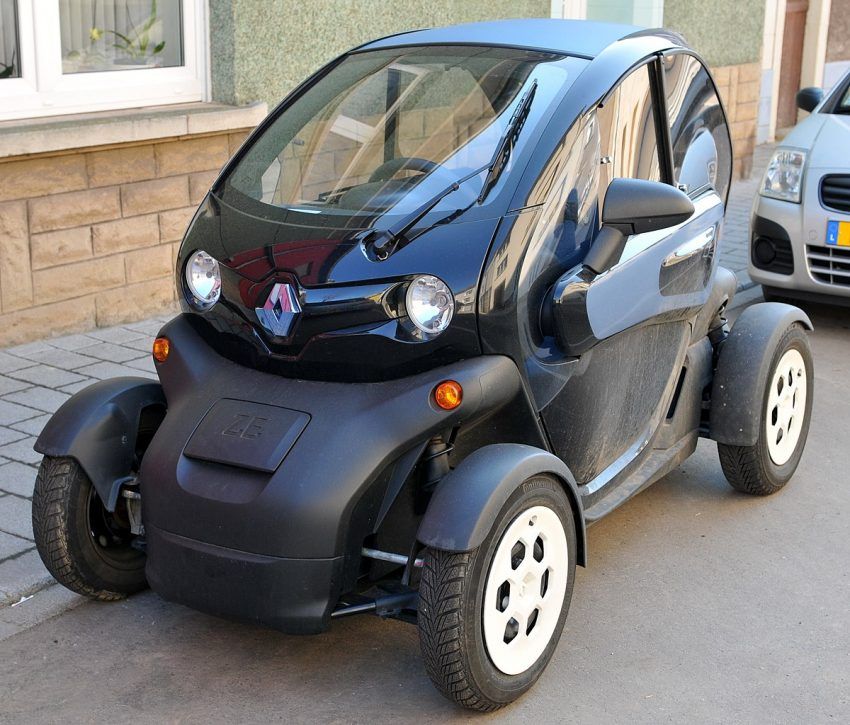
12. **Renault Le Car** Debuting in 1972, the Renault Le Car, known as the Renault 5 outside the United States, quickly gained popularity as a compact hatchback. It was lauded for its efficient design, impressive affordability, and practical utility, offering a sensible and charming solution for urban mobility. This cute little car seemed poised to capture the hearts of American consumers looking for something different.
However, American owners soon discovered that the Le Car suffered from serious reliability issues, which quickly tarnished its initial appeal. Compounding these problems was a significant lack of available parts and adequate servicing infrastructure within the United States, making maintenance and repairs a constant headache for owners. These practical shortcomings severely undermined its long-term viability in the market.
As a direct result of these challenges, this once-popular compact hatchback quickly plummeted in value and has unfortunately never truly recovered its market worth. For the adventurous enthusiast, however, the Renault Le Car offers a rare and incredibly affordable opportunity to own a piece of quirky European automotive history, proving that even a vehicle with a tumultuous past can find a new appreciation among collectors seeking unique and budget-friendly classics.
Car Model Information: 2020 BMW X3 xDrive30i
Name: Renault 5
Caption: Second generation R5
Manufacturer: Renault
Production: 1972–1996
Class: Supermini car
Successor: Renault Clio,Renault Twingo
Categories: 1980s cars, 1990s cars, Articles with French-language sources (fr), Articles with Spanish-language sources (es), Articles with short description
Summary: The Renault 5 is a five-passenger, three or five-door, front-engine, front-wheel drive hatchback supermini manufactured and marketed by the French automaker Renault over two generations: 1972–1985 (also called R5) and 1984–1996 (also called Super 5 or Supercinq).
The R5 was marketed in the United States and Canada as Le Car, from 1976 until 1983. Renault marketed a four-door sedan variant, the Renault 7, manufactured from 1974 until 1984 in Spain by Renault’s subsidiary FASA-Renault and exported to select markets.
The Renault 5 became the best-selling car in France from 1972 until 1986, with a total production exceeding 5.5 million over 14 years, making it France’s most popular car.
Get more information about: Renault 5
Buying a high-performing used car >>>
Brand: Renault Model: Le Car
Price: $19,649 Mileage: 66,810 mi.
Read more about: Some Used Vehicles That Defy Expectations and Deliver Lasting Value
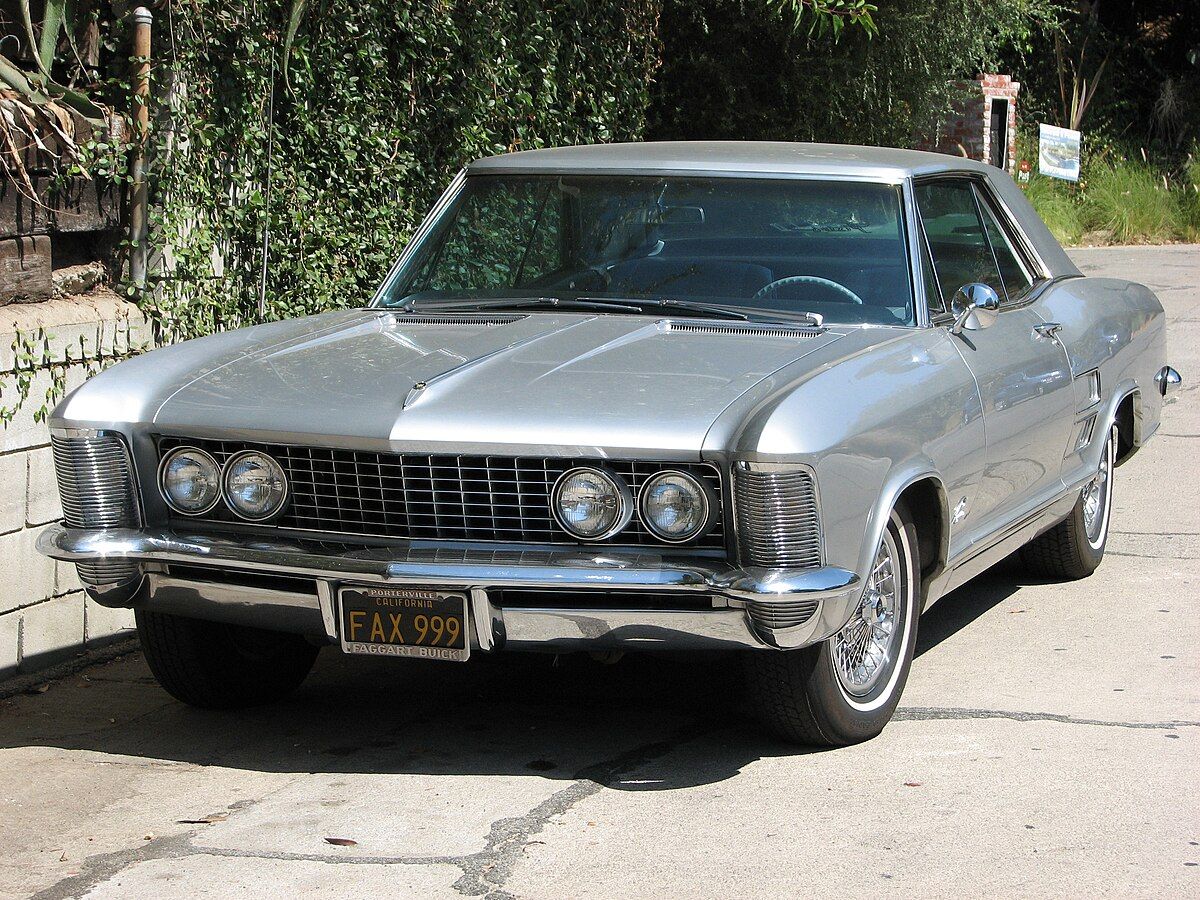
13. **Buick Riviera** The Buick Riviera, a luxury coupe that first debuted in 1963, was introduced as Buick’s flagship model, and it certainly lived up to that promise. It perfectly embodied elegance, substantial power, and cutting-edge design for its era. The iconic “Boat Tail” design, specifically offered for the 1971-73 model years, remains among the most visually striking and instantly recognizable variants of the car, showcasing a bold, distinctive styling statement.
Despite its undeniably gorgeous looks and impressive initial presence, the Buick Riviera surprisingly saw significant depreciation over time. A major contributing factor to this decline was the demand for powerful luxury coupes, which practically vanished in the aftermath of the oil crisis. Consumer preferences shifted dramatically towards smaller, more fuel-efficient vehicles, leaving large, thirsty coupes like the Riviera struggling to find their place in a rapidly changing market.
With demand evaporating, the Riviera’s value declined, making it an unexpected bargain for today’s classic car enthusiast. It stands as a testament to a bygone era of American luxury and design, offering a chance to own a truly distinctive and elegant vehicle at a fraction of its original prestige, making it a compelling option for those who appreciate unique styling and a comfortable, commanding presence on the road.
Car Model Information: 1971 Buick Riviera
Caption: 1963 Buick Riviera
Name: Buick Riviera
Predecessor: Buick Super
Manufacturer: Buick
ModelYears: 1963–1993,1995–1999
Class: Personal luxury car
Categories: 1960s cars, 1970s cars, 1980s cars, 1990s cars, All articles with specifically marked weasel-worded phrases
Summary: The Buick Riviera is a personal luxury car that was marketed by Buick from 1963 to 1999, with the exception of the 1994 model year.
As General Motors’ first entry into the personal luxury car market segment, the Riviera was highly praised by automotive journalists upon its high-profile debut. It was a ground-up design on a new GM E platform debuting for the 1963 model year and was also Buick’s first unique Riviera model.
Unlike its subsequent GM E platform stablemates, the Oldsmobile Toronado and Cadillac Eldorado, the Riviera was initially a front engine/rear-wheel drive platform, switching to front-wheel drive starting with the 1979 model year.
While the early models stayed close to their original form, eight subsequent generations varied substantially in size and styling. A total of 1,127,261 Rivieras were produced.
The Riviera name was resurrected for two concept cars that were displayed at auto shows in 2007 and in 2013.
Get more information about: Buick Riviera
Buying a high-performing used car >>>
Brand: Buick Model: Riviera
Price: $22,900 Mileage: 91,150 mi.
Read more about: Dog Person Adopts Kitten: Hilarious & Heartfelt Moments When Pups Become Unexpected Cat Parents
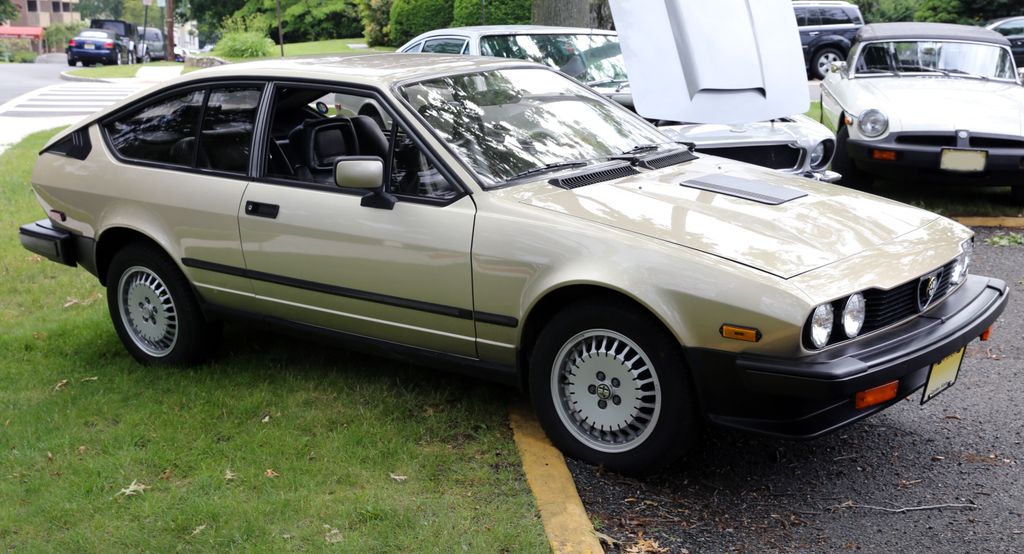
14. **Alfa Romeo GTV6** Alfa Romeos are universally celebrated for their stunning aesthetics, often considered among the best-looking automobiles in the world, and the gorgeous GTV6 is certainly no exception. Initially released in 1980, this sports coupe featured a classic rear-wheel-drive layout, combined with a great-sounding V6 engine that delivered an engaging and characterful driving experience. It was a true driver’s car with an unmistakable Italian soul.
However, Alfa Romeo cars have a notorious reputation for reliability issues and high maintenance costs, and the GTV6 was unfortunately not immune to these challenges. These factors, coupled with a general decline in demand for older, more niche European sports cars, led the GTV6 to quickly decline in value shortly after its discontinuation in the late 1980s. Its initial high price, combined with subsequent ownership complexities, made it less appealing on the used car market.
Today, a well-preserved unit of the Alfa Romeo GTV6 can be picked up for a mere fraction of its original MSRP, making it a highly attractive proposition for enthusiasts. For those who appreciate its striking design, engaging dynamics, and that unique Alfa Romeo charm, and who are prepared for the quirks of Italian engineering, the GTV6 offers an incredibly affordable gateway to owning a truly beautiful and sonically satisfying classic European sports coupe.
Car Model Information: 2020 BMW X3 xDrive30i
Name: Alfa Romeo Alfetta
Caption: 1978 Alfa Romeo Alfetta GTV 2.0
Manufacturer: Alfa Romeo
Production: 1972–1987
Assembly: Arese,Rosslyn, Gauteng
BodyStyle: Sedan (automobile)
Layout: Front-engine, rear-wheel-drive layout
Related: Alfa Romeo Giulietta (116),Alfa Romeo Alfa 6,Alfa Romeo 90
Categories: 1980s cars, Alfa Romeo vehicles, Articles with short description, CS1 Dutch-language sources (nl), CS1 French-language sources (fr)
Summary: The Alfa Romeo Alfetta (Type 116) is a front-engine, five-passenger saloon and fastback coupé manufactured and marketed by Italian automaker Alfa Romeo from 1972 to 1987 with a total of over 400,000 units produced during its production run.
The Alfetta was noted for the rear position of its transaxle (clutch and transmission) and its De Dion tube rear suspension — an arrangement designed to optimize handling by balancing front/rear weight distribution, as well as maintaining a low polar moment of inertia and low center of gravity. The interior of Coupé models featured a then unusual central tachometer placement — by itself, directly in front of the driver.
The Alfetta name, which means “little Alfa” in Italian is derived from the nickname of the Alfa Romeo Alfetta (Tipo 159), a successful Formula One car which in its last iteration introduced in 1951, paired a transaxle layout to De Dion tube rear suspension — like its modern namesake.
Get more information about: Alfa Romeo Alfetta
Buying a high-performing used car >>>
Brand: Alfa Romeo Model: GTV6
Price: $19,649 Mileage: 66,810 mi.
Read more about: Beyond the Garage: 15 Vintage Cars That Are Secretly Skyrocketing in Value Right Now
The journey through these undervalued classics underscores a crucial point for any automotive enthusiast: the true worth of a car often transcends its market price. While some vehicles might not fetch record-breaking sums at auction, their enduring appeal lies in their unique design, the stories they tell, and the sheer joy they bring to those who appreciate them. These are not just cars; they are accessible pieces of automotive history, waiting to be rediscovered, driven, and cherished, proving that the thrill of classic car ownership doesn’t always have to come with an exorbitant price tag. It’s about finding the heart in the machine, and in these cases, the heart beats strongly at a surprisingly reasonable cost. Let’s keep exploring, because the road to classic car joy is full of unexpected turns and amazing finds.


